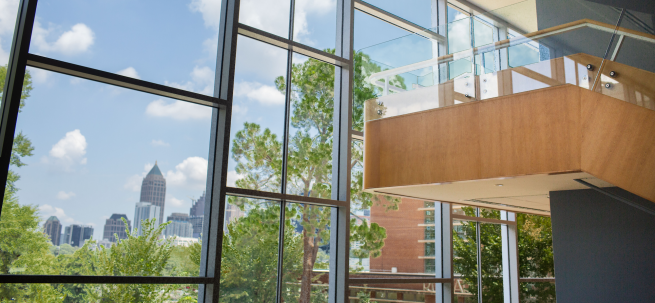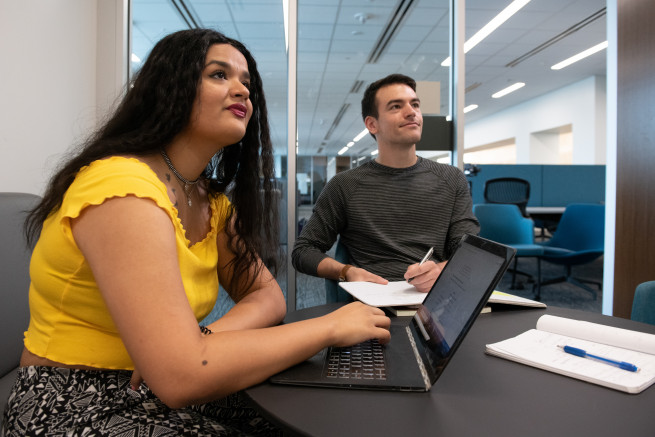A lingering challenge from the early design phase to the present has been to clearly and appropriately define the word “library” for stakeholders. When faced with a novel question or challenge, the culture within our library encourages taking a reflective approach in order to allow the requisite space and time for knowledge to coalesce and wisdom to emerge. With respect to the word “library,” a small group of librarians developed an influential white paper that characterized the new Georgia Tech Library as an evolutionary step for Georgia Tech’s campus and the institution of research libraries. The authors write: “[j]ust as the term ‘theater’ once signified a space where Greek drama was performed and now connotes a space where digital images are projected, the activity within a library space may change, but the label and the place retain their informative, symbolic power.”
Given this semantic claim, the authors of this white paper make the case that “[t]he reimagined and renewed Georgia Tech Library will continue to be the important hub for campus knowledge creation, collaboration, and scholarship that it has always been. Every great academic institution relies on the spaces, services, staff, and symbolic value of the ‘library’ to serve that purpose, regardless of the form its library may take.” As a result, the new facility will indeed be called a library, which stands as a rather important signifier, given the fundamental change in programmatic focus of the building.
The Library is interdisciplinary, neutral, and open to all. No other space or unit on campus is committed to enhancing and promoting the scholarship and learning of all academic disciplines in the same way.
As an academic library, the Georgia Tech Library has a mission that is easy to state and hard to define: Define excellence in the creation, preservation, curation, and connection of scholarship. Through this work we create new paths of learning, knowledge, information, and resources to develop leaders who advance technology and improve the human condition..
The Library fulfills its mission through a variety of services and resources that are developed and refined by Library faculty and support staff in collaboration with the Library’s constituency: the students, faculty, and staff of Georgia Tech.
The Library partnered with Brightspot Strategy, a user-centered design consultancy, to assist with the user research process and develop a shared vision to inform the architectural design and programming of the renewed Library. At a high level, the objective of the User Research Study was to understand the research, teaching, and learning needs of various groups on campus and identify space and service opportunities to support those needs. Review the following documents to learn more:

